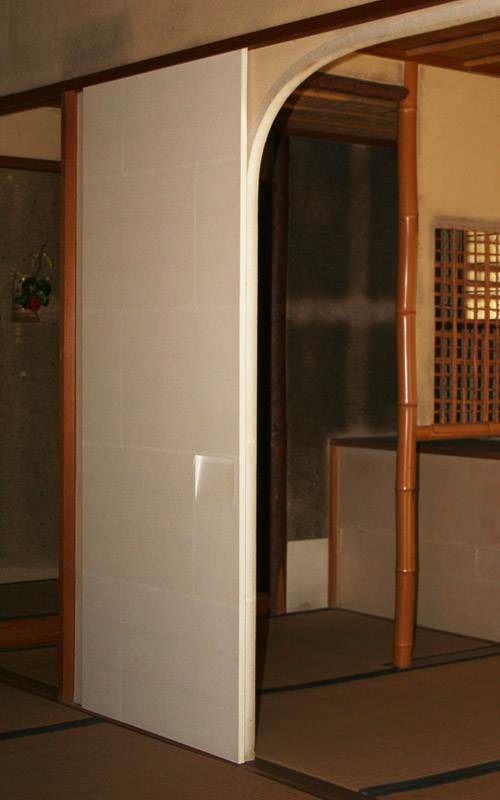|
||
 |
||
A type of paper-covered, sliding door *fusuma ¦. It is completely covered with stout Japanese paper either *housho ò or *torinokogami ¹Ìq. The paper covers the lattice *koushi iq, on both sides of the frame. It has no visible stiles or rails. To create a catch for this type of door, a small amount of paper is cut on the bottom and three sides within one grid of the lattice. The paper is pushed into one unit of lattice and pasted onto the upper lattice. It is also pushed diagonally into the lower edge so that it can be gripped when opening or closing the *shouji áq. The same method is used on the back side, but another grid adjacent to, or very near, the front one is used. This pull on the reverse side the paper is pasted on the lower lattice and pushed diagonally into the upper edge. Taikobari shouji ¾Û£áq is an old name for slid doors of this type. Example: Fushin'an Omotesenke sRÁ\çÆ, Hanshou'an ¼°Á, both in Kyoto.

Gen'an
Urakuen ³ÁLy (Aichi)
@
(C)2001 Japanese Architecture and Art Net Users System.@No reproduction or republication without written permission.
fÚÌeLXgEÊ^ECXgÈÇASÄÌRec̳f¡»E]ÚðֶܷB

